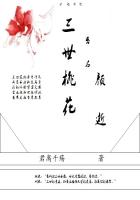In the illustration under No. 3, then, the sums assumedly returned into the hands of the capitalist at the end of one year are (a) a sum of value amounting to £20,000 which he invests again in the circulating constituents of the capital, and (b) a sum of £8,000 which has been set free by wear and tear from the value of the advanced fixed capital;simultaneously this same fixed capital remains in the process of production, but with the reduced value of £72,000 instead of £80,000. The process of production therefore would have to be continued for nine years more, before the advanced fixed capital outlived its term and ceased to function as a creator of products and values, so that it would have to be replaced. The advanced capital-value, then, has to pass through a cycle of turnovers, in the present case a cycle of ten annual ones, and this cycle is determined by the life, hence the reproduction or turnover time of the applied fixed capital.
As the magnitude of the value and the durability of the applied fixed capital develop with the development of the capitalist mode of production, the lifetime of industry and of industrial capital lengthens in each particular field of investment to a period of many years, say of ten years on an average.
Whereas the development of fixed capital extends the length of this life on the one hand it is shortened on the other by the continuous revolution in the means of production, which likewise incessantly gains momentum with the development of the capitalist mode of production. This involves a change in the means of production and the necessity of their constant replacement, on account of moral depreciation, long before they expire physically. One may assume that in the essential branches of modern industry this life-cycle now averages ten years. However we are not concerned here with the exact figure. This much is evident: the cycle of interconnected turnovers embracing a number of years, in which capital is held fast by its fixed constituent part, furnishes a material basis for the periodic crises. During this cycle business undergoes successive periods of depression, medium activity, precipitancy, crisis. True, periods in which capital is invested differ greatly and far from coincide in time. But a crisis always forms the starting-point of large new investments. Therefore, from the point of view of society as a whole, more or less, a new material basis for the next turnover cycle. [22a]
5) On the way to calculate the turnovers, an American economist states: "In some trades the whole capital embarked is turned or circulated several times within the year. In others a part is turned oftener than once a year, another part less often. It is the average period which his entire capital takes in passing through his hands, or making one revolution, from which a capitalist must calculate his profits. Suppose for example that a person engaged in a particular business has one half of his capital invested in buildings and machinery; so as to be turned only once in ten years; that one-fourth more, the cost of his tools, etc., is turned once in two years; and the remaining fourth, employed in paying wages and purchasing material, is turned twice in one year. Say that his entire capital is $50,000.
Then his annual expenditure will be. . . the mean term in which his capital is turned being about sixteen months [In the manuscript Marx points out the fallacy of such a method of calculating the period of the turnover of capital. The mean term of turnover (16 months) given in the quotation was calculated with account taken of a profit of 7.5 per cent on the aggregate capital of $50,000.
Profit discounting, the turnover of capital is equal to 18 months. -- Ed .]
. . . Take another case, . . . say that one-fourth of the entire capital circulates in ten years, one-fourth in one year, and one half twice in the year. Then the annual expenditure will be, $12,500(Scrope, Pol. Econ. , edit. Alonzo Potter, New York, 1841, pp. 142, 143.) [The book referred to is A. Potter's Political Economy, Its Objects, Uses, and Principles , New York, 1840. According to the author's "Advertisement", the second part of the book is substantially a reprint (with many alterations made by A. Potter) of G. J. P. Scrope's The Principles of Political Economy , London, 1833. -- Ed .]
6) Real and apparent differences in the turnover of the various parts of capital.















